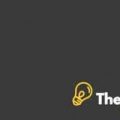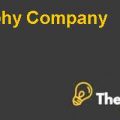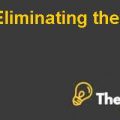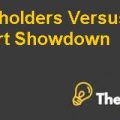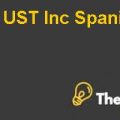
Problem Statement:
Following points need to be analyzed
- The 103 product was not generating positive cash flows.
- Price reduction in key product.
- Costing System was not good enough.
Introduction:
In the year 2005, Herbert waters was appointed as the General Manager of the company named Superior Manufacturing Company. Waters gained experience in manufacturing products which were same as Superior Manufacturing. Before Waters joined, the company was experiencing the problems which arose after the death of the Richard Harvey, the founder of the company. After the death of the founder, Paul Harvey became the president of the company. He was as experienced as his father. However, he made some poor decisions which led the company towards an annual loss of $688000. He attracted Waters by giving him the stock inventive for his retirement plan. In return, Waters asked for the full authority and guidance to Paul in management decision. After appointment in 2005, he instructed the accounting department to provide detailed report on expenses and earnings.
Superior Manufacturing Company: SMC produced three industrial products: 101, 102 and 103 which were sold as raw material for other manufacturing companies. All the products were sold in various proportions. New England was the market with eight competitors of the same product. The potential dominator of the market was Samra Company. Samra influenced the movement in market price of the product. The price cutting strategy was not effective in this market and the only advantage of price was cash discount of the quoted selling price. In the past, the price cutting had been followed till Samar’s entry into the market. From that point of time, the price cutting strategy was eluded. Waters knew that rise in the prices could not be done individually by Superior because market customers could opt for other manufacturing firms as the same features of products were available in the market.
Discussion:
Discussions are made on the following questions in the case:
- Based on the 2004 statement of profit and loss data (Exhibits 1 and 2), do you agree with Waters decision to keep product 103?
- Should Superior lower price on January 1, 2006 of its product 101? To what price?
- Why did Superior improve profitability during the period January 1 to June 30, 2005? How useful was the data in Exhibit 4 for the purpose of this analysis?
- Why is it important that Superior has an effective cost system? What is your overall appraisal of the company’s cost system and its use in reports in relation to management? List the strengths and weaknesses of this system and its related reports for purposes of management regarding the use of system’s output. What recommendations, if any, would you make to Waters regarding the company’s cost accounting system and its related reports?
Based on the 2004 statement of profit and loss data presented in exhibit 1 and exhibit 2, do you agree with Waters decision to keep product 103?
Analysis:
If we look into the P&L statement for year 2004, it is obvious that the product 103 is incurring substantial losses. The calculation shows the overall substantial loss of $2.209 million on total sales and per unit loss on sale of $2.16.
Exhibit 1 in appendices is referring the above data.
The size of the indirect cost is at incremental level. Its amount is 28% of the total cost. In view of the above table and management’s point that production facilities of product 103 is under its full capacity, then in conclusion there is a chance of economies of scale, which is probably achievable.
To support the idea of Waters for continuing the production facility of product 103, we assume that the production has been already stopped.
The product 103 will not generate profit as its production will stop. From this, company will save about $2.2 million from loss with expected unit sale of $1 Million.
On the other side, company will bear all the cost, for example: all non-variable cost, fixed expenses, restructuring of the workforce and reduction in sale. The table given below is representing all the cost under dropping the production of product 103.
In appendices calculation is given in Exhibit 2 .
To stop producing the 103 product is not a good as it will result in more losses than continuing its production.
Should Superior lower price as on January 1, 2006 its of product 101?
Analysis:
After analyzing the future scenario of the company, price deviation was made by the competitors. Two forecasts were made on the company’s sales in the first quarter of 2006. The first forecast was made on retaining the current price of $24.5 while the second forecast was made on decreasing the price $22.5 as the competitors intend to do.
Waters forecasted 750,000 unit sales on previous price and followed the price reduction maintained by Samra Company. He forecasted 1 million unit sales.
The forecasted balance sheet for the first quarter of 2006 has been calculated through allocating the costs using assumptions and the given information by the management.
Assumptions made to calculate the budget for first quarter of 2006 are given below:
- Cash discount and unit sales of product 102 and product 103 will remain the same while following the declining trend of the market.
- Unit cost of direct labour and repairs will be constant.
- Non variable costs on the basis of fixed allocation will remain the same (e.g. rent, property taxes and insurance, power, light and heat, building services, depreciation and, interest).
- As described in the case, cost of materials and supplier will decrease by 5%.
At price of $24.5, 750,000 unit sales was recorded with loss incurred about $22550000 which has been calculated and shown in below table.
Please see the above calculation in Exhibit 3.
The second forecasted price was $22.50 for the 1,000,000 unit sales; this forecasted price also incurred the loss of about $649.000 which is lower than the previous scenarios.
The following table represents the losses of each product:
In order to determine the best price for the production facility to be continued, an assumption was made by increasing the demand for variable value.
Please refer the Exhibit 4 and Exhibit 5 for the calculation of the prices ranging from $24.50 to $22.50 for product 101.
Why did Superior improve profitability during the period January 1 to June 30, 2005? How useful was the data in Exhibit 4 for the purpose of this analysis?
Analysis:
The costing system of Superior Manufacturing was not good enough to record different unit cost. As far as 2005 results are concerned, they were not accurate. To justify this, calculations are already mentioned above. The first quarter results were profitable, because in reality with the same non-variable or fixed cost, direct cost for products, with same annual sold quantities with similar prices, there was a significant improvement in the company’s performances........
This is just a sample partial case solution. Please place the order on the website to order your own originally done case solution.
This case solution will also come with separate excel file with calculations.
Management must take the appropriate data costs from the cost of the accounting system for decision-making product line. Rewritten version of the previous case. "Hide
by David F. Hawkins, Jacob Cohen, James W Culliton Source: HBS Premier Case Collection 8 pages. Publication Date: July 15, 2004. Prod. #: 105010-PDF-ENG

